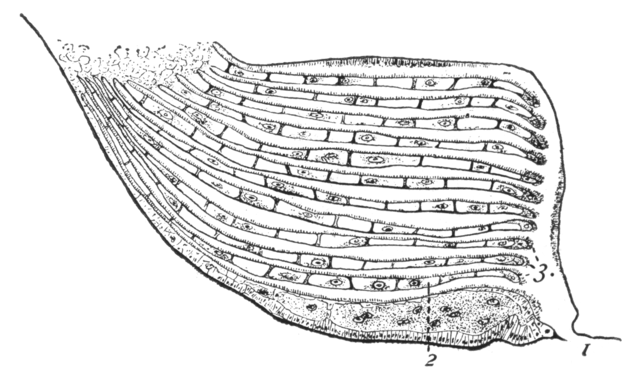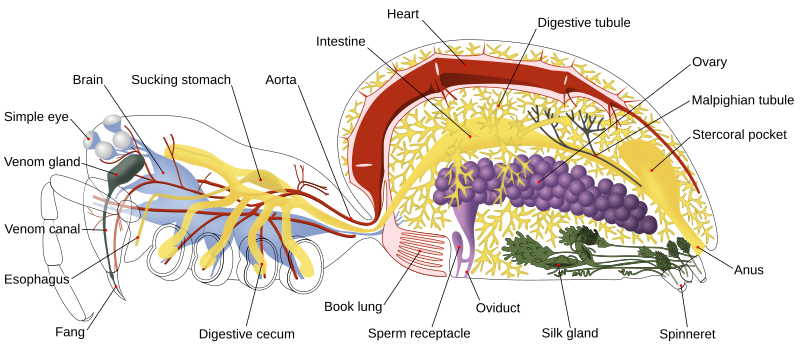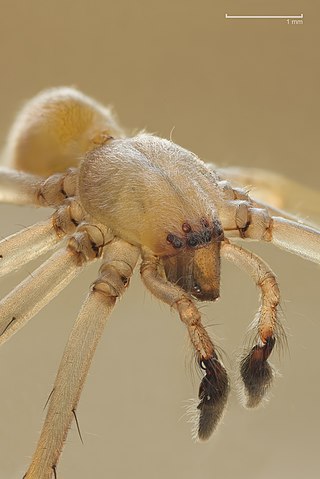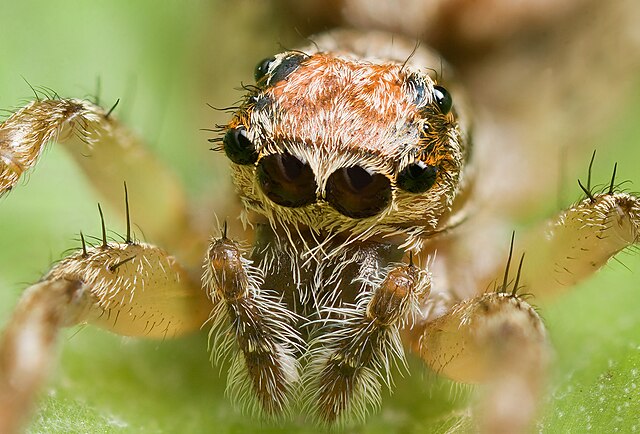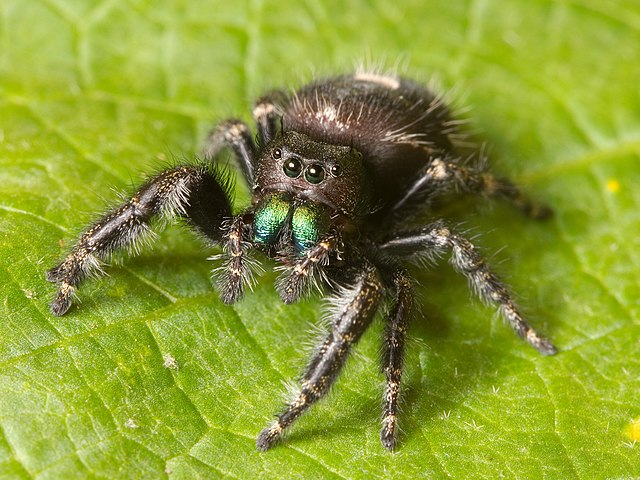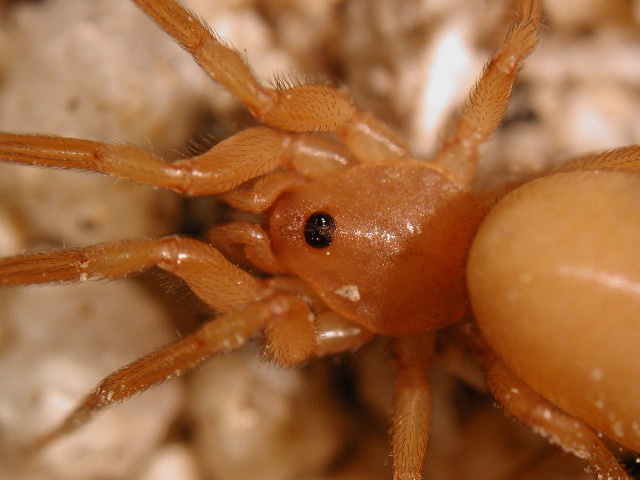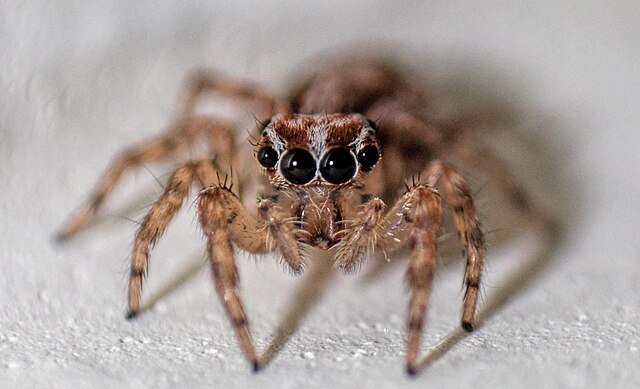We just learned about a
spider exoskeleton.
Usually when we think of spider webs, we think of the big spirals, but not all spiders make webs like that.
The spiders that make the big spiral orbs, are called
orb weavers.
When they build the web, the start off by using non-sticky silk so they don't get stuck to their own web.
They tie one line of silk across two spots.
Then they hook another line of silk in the middle and drag it down, so it is almost in a Y shape.
They keep adding more lines from the middle of that Y to the outside where they can hook the silk line.
These lines are called
radial lines.
After the radial lines are done, the spider makes a small circle of threads in the middle to tie the web tightly.
Next it makes a few wide spaced spiral circles around the web.
That makes a nice starting point for the web, and a place for the spider to walk.
Next the spider starts with the sticky web. It walks around on the non-sticky spirals it just made, and replaces them with sticky spirals very close together so they can catch bugs.
They do this for the whole rest of the web, then sit there and wait for some food.
Many of the spiders take down their whole web every night and eat the silk, then rebuild it again right after!
That's a lot of work, but it helps keep the web from getting all covered in dirt.

(from: wikipedia -
spider web)
Kid Facts - Blast from the past: Kudu












